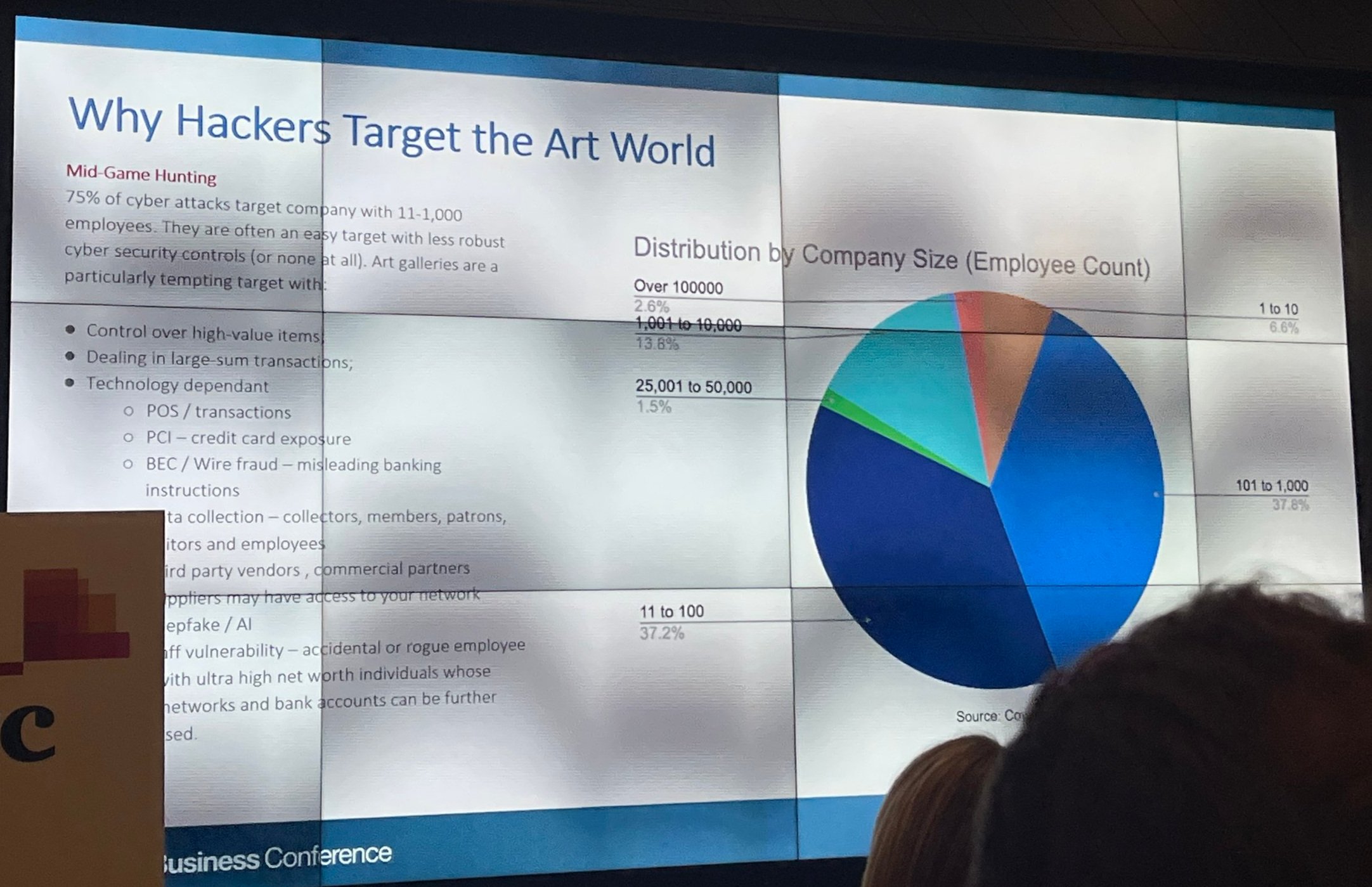Of course, we never want to subject high-value objects to the rigors of apathetic handling by FedEx, DHL, UPS, etc. but we can find ourselves cornered by lack of availability of options due to time sensitivity or geography or any number of reasons that eliminate a traditional art shipper as an option. Galleries and other smaller institutions may also do so for budgetary reasons or, frankly, because it more efficiently gets the job done and distributes its wares to every nook and cranny of the globe.
The Art Business Conference, New York 2023
Climate Climate Control
In other words, take the principle responsibility of reducing collection emissions off the already threatened collection itself. Do not add more risk by extending travel times by sea or compromising the quality of packing for the sake of less substantial greenhouse gas reductions. We need to track and hunt the biggest game: emissions from our buildings in the form of electricity used to climatize spaces powered by non-renewable energy sources.
Museums are Neutral [Ground]
As the International Council of Museums (ICOM) says (and I paraphrase), the attacks on art and cultural heritage in the name of climate activism show the immense value of these objects to the world. The attacks finally attracted the attention of the public outside of the cultural heritage community. How many of you heard of #JustStopOil before these attacks?
Multi-Million $ Condition Report
In summary, a prominent collector’s house caught on fire which damaged several ultra-high value pieces. Insurers claim that this specific group works did not suffer any damage after already paying out $141,000,000 in fire-related damages. Insurers further claim that damages in those works predate the 2018 fire. Check the condition report.





![Museums are Neutral [Ground]](https://images.squarespace-cdn.com/content/v1/5b818890297114b18b5c6121/2a374805-2924-47dc-a1df-495dfb36944c/IMAGE_JustStopOil_NationalGallery6_14102022-1230x923.png)
